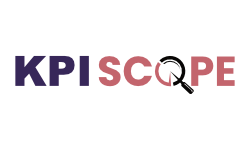The Client: A health equipment e-commerce retailer
Industry
Health care technology
Context
The COVID-19 pandemic years (2020-2022) marked an unprecedented era for businesses operating in the medical supply chain. For our client, an eCommerce distributor of essential medical equipment, with an average order value (AOV) of $1200, this period was characterized by exponential growth, positioning the business as a critical digital lifeline for healthcare providers. Data from this time reflects this boom: the initial investment in 2020 generated an outstanding ROAS of 366.08, with subsequent years maintaining strong ROAS figures.
However, as global demand for acute-care medical supplies normalized, the company began to face significant digital marketing headwinds. The year 2023 proved to be a critical turning point where efficiency collapsed: the Cost reached its peak at $73K, and the resulting ROAS dropped to 166.46, representing a severe decline in profitability compared to the preceding two years.
This sharp increase in acquisition costs, leading to a much lower Return on Ad Spend, directly impacted the company’s bottom line.
The Challenge:
Our client’s primary strategic goal became clear: to recalibrate its digital marketing investment to match the hyper-efficient performance seen during the pre- and early-pandemic environment. The objective was not merely to reduce spending, but to strategically optimize campaigns to elevate the ROAS and bring digital media efficiency back into alignment with the company’s high-value average order size.
This case study details the data-driven strategy and execution used to confront this post-COVID normalization and drive the return to sustainable, high-level profitability.
Our Strategic Approach
Our strategy focused on three core pillars: Granular segmentation, Bidding Automation, and Creative Iteration.
- Restructuring and Hyper-Segmentation:
- Action: Moved away from broad campaigns to a highly segmented structure based on AOV (Average Order Value) and profit margin for key product categories.
- Impact: Allowed for tailored bid adjustments and budget allocation to the most profitable segments, reducing waste on low-margin areas.
- Advanced Automation & Real-time pricing:
- Action: Implemented product feeds to provide the algorithm with dynamic conversion value based on real-time inventory and competitive price changes.
- Impact: Significantly improved impression share for high-intent, high-margin queries.
- Revamping the messaging strategy
- Action: Ad copy revamp and ad assets expansion
- Impact: Significantly improved CTR and impression share for high-intent, high-margin queries.
- Automated bidding best practices:
- Action: Using automated bidding to focus on revenue growth and ROAS goals
- Impact: Significantly improved impression share for high-intent, high-margin queries while strictly adhering to the target ROAS.
Results: Year-over-Year Performance
| Year | Ad Spend | Conversions | Cost/conv. | Conv. Value | ROAS | ROAS YoY Variation | Cost YoY Variation |
| 2020 | $8,080.20 | 2,465 | $3.28 | $2,958,000 | 366.08 | ||
| 2021 | $25,315.30 | 7,461.87 | $3.39 | $8,954,244 | 353.7 | -3.38% | +213% |
| 2022 | $42,768.30 | 13,485.14 | $3.17 | $16,182,168 | 378.36 | +6.97% | +69% |
| 2023 | $73,285.60 | 10,165.81 | $7.21 | $12,198,972 | 166.45 | -56.01% | +71% |
| 2024 | $52,600.40 | 7,918.34 | $6.64 | $9,502,008 | 180.64 | +8.52% | -28% |
| 2025 (H1) | $22,942.25 | 4,986.50 | $4.60 | $5,983,800 | 260.82 | +44.38% | -13% |
*The cost variation for 2025 estimates the same spend for H2, 2025 as it was in H1.
Conclusion:
Investment recalibration
- Cost Reduction: The investment in 2023 peaked at $73,2K. Following the strategic changes, the agency immediately reduced the spend to $52,6K in 2024 and further reduced it to $22,9K in H1, 2025.
- Goal Achievement: By 2025, the investment level was substantially lower (-13% forecasted to end of year).
ROAS restoration and efficiency improvement
The optimization efforts directly addressed the drop in campaign efficiency, resulting in a steady climb back toward optimal ROAS values.
Reversing the Decline: The 2023 performance bottomed out with a ROAS of 166.45. In the first year of optimizations (2024), the ROAS improved to 180.65, demonstrating immediate positive impact.
Continued Growth: By 2025, the ROAS further increased to 260.82. This improvement was achieved despite a significant budget reduction, underscoring a greater focus on high-quality, high-intent traffic.

